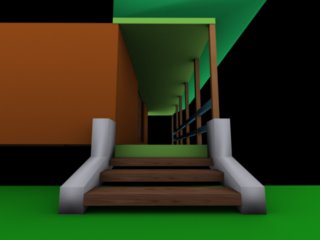Microsoft Windows Vista, formerly codenamed Microsoft Longhorn has a taskbar that is black in colour and like everything else in Vista, it has a translucent glass-like look to it. The title bars too are translucent and the menu bars are colour coded. Most of the icons have been updated to match the new scheme and they look great even when enlarged. Vista also adds extra levels of “zoom” for viewing files and folders. When folders are zoomed in using the scroll on a mouse, you can see the photos sticking out of an open folder. The same applies to folders containing documents, spreadsheets, slides and files. Unfortunately, you only get a glimpse of the files and it doesn't really help in figuring what is inside. The translucent taskbars, animation effects such as smooth fading when folders are opened and closed and the zooming or "flipping through open windows" features look rather impressive. The Start button, which is now in black but glows green when the cursor is placed on it, stays on in Vista but it behaves a little differently. It will no longer spawn menus and sub menus when the All Programs link is clicked - which simplifies the task of searching programs. While the Start menu will behave very much like a folder within Windows, it will display a list of programs on the left side of the Start menu when the All Programs link is clicked. If the programs reside in a folder, they will expand just as if they were being viewed under Windows Explorer. But what makes looking for programs really easy is the inclusion of a search box that lists the programs that match the letters you key in, and as you type it drills down to the correct program. No doubt, this will be very useful or handy if you have lots of application installed. Virtual folders are a great way to organise data, especially if you have a lot of media files such as songs, movies and photos in digital format. These folders are dynamic in nature as it does searches every time they are opened. However, for virtual folders to really work well, files should have meta tags to describe its contents. Vista also includes Internet Explorer 7, which finally has tabbed browsing that was made popular by Mozilla Firefox. To prevent spyware from replacing the address bar with a fake toolbar containing a phony URL, the address bar in IE 7 is now no longer part of a toolbar. It is now placed right at the top and above the menu bar, and this new look is also replicated for folder views throughout Vista. From what I have read when Vista boots up, it will only load the most essential parts of the operating system and allow the user to use it almost immediately. While it is being used, Vista will selectively load all the necessarily things in the background. When a user shuts down Vista, it will by default go to into Sleep mode instead of totally shutting down. Besides that, the Sleep feature offers the best as it has combined the Standby and Hibernate modes available in Windows XP. Now I only hope that Microsoft will prove to us that their Windows Vista, which is due to be released later this year or early next year has all these good features and better spyware resistance and most importantly it operates in stability that would mean less program crashes. |
For more info, visit Windows Vista and Vista Won't Suck.







 Interesting news clip (received from email) !!!
Interesting news clip (received from email) !!!






